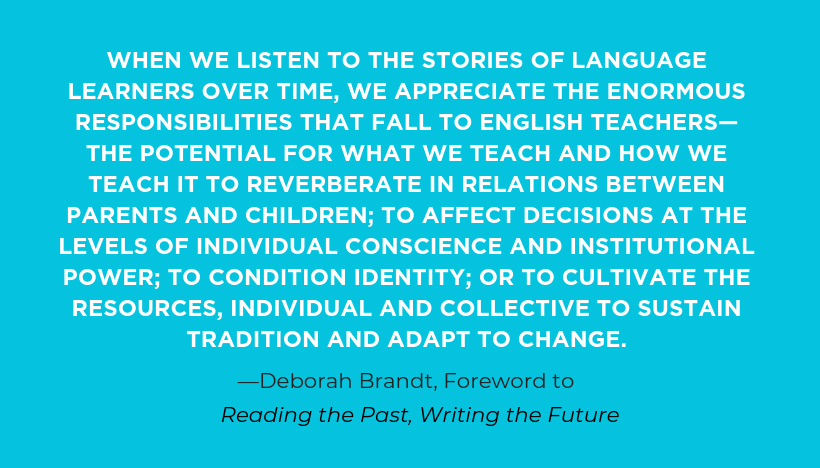Invaders of Mars was on TV this morning—I know, maybe I should be making better use of my time—but there is some food for thought here. What the invaders do to the humans they catch is inject their human brains with some mixture that results in humans with obedient alien brains. Yes, there have been teaching times when I’ve wished I could do this to my students, but most of the time my goal was to guide them through reading and writing so they could see the world more broadly, think more deeply for themselves, and, most of all, to enjoy doing this.
In 1936, NCTE President Dora V. Smith wrote that our goal as English teachers is to:
. . . educate each pupil in terms of his own uniqueness within the context of the group. All this has special import for the curriculum. It cannot be done adequately if the aim is the reading of specific books by every member of the class, mastery of a set number of rules by all pupils, or attainment by everybody of specific standards in speech or writing. . . . (cited in Reading the Past, Writing the Future, ed. Leila Christenbury, 2),
So, reading Dora V. Smith, my vision in which students are the ones who, with my guidance and understanding of the subject, are using their curiosity to create their learning, is right on the mark. But, curricular mandates issued by states and localities in order to prepare students for tests often have stood in the way.
Of course, there are some things we must do in our classrooms in order to keep our jobs, but at least some of the time—and hopefully most of the time—there are ways to instill the joy of learning by giving students choice in what they read and write. NCTE’s Beliefs about Students’ Rights to Write and The Students’ Right to Read are two position statements that spell out the importance of the students’ need to decide what and how they’d like to read and write and how as teachers we might help them do this.
After all, Choosing Is a Right, and it’s necessary if we want our students to learn and grow in their own thinking.

